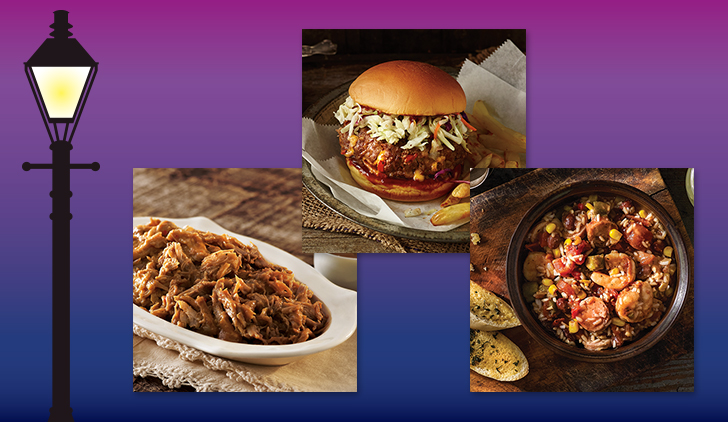
Everyone knows May is the month for Mother’s Day and Memorial Day, but did you know May is also National Barbecue Month, National Hamburger Month and Jazz Appreciation Month?
National Barbecue Month
Barbecue is a traditional, Southern way of cooking meat over low-heat wood or coals for a long period of time. The cooking style originated from natives on the island of Hispaniola, which is currently the home of Haiti and the Dominican Republic. Spanish colonists brought the cooking technique to the continental U.S., and by the 19th century, barbecue was deeply embedded in Southern culture.
Throughout the South, pigs were less expensive and easier to raise than cattle, and they could be left to roam forests when food was scarce. Barbecuing made their leaner meat more tender. However, in Texas, cattle farming was more common, leading to beef-based barbecue in that region. Kansas City barbecue introduced other meats to the mix as well.
While the low-and-slow cooking method is relatively similar across the South, differences mostly lie in the styles of sauces and rubs. Some regions like the Carolinas prefer vinegar- or mustard-based sauces, and others prefer tomato-based sauces or a dry rub of herbs and spices.
If you’re an aspiring pitmaster, Publix has all the ingredients you need to try your hand at Southern-style barbecue this month, from GreenWise Pork Loin Back Ribs to a wide selection of sauces and rubs. And if you want to make your own sauce, we have you covered there, too. Pick up vinegar, mustard or tomatoes, and a selection of spices, so you can follow or create a recipe to match your taste.
New to barbecue? Our Aprons Carolina-Style Pulled Pork is an easy way to get started.
National Hamburger Month
The hamburger we know today is an American invention, and it wasn’t an overnight development with a clear origin. In the mid-1800s, many Germans immigrated to the U.S., and Hamburg, Germany’s, reputation for high-quality beef came with them. This led restaurants to offer Hamburg-style chopped beef steaks to meet their demand.
Ground beef became increasingly popular over the next 50 years, but the origin of putting the meat between slices of bread is highly contested. Wherever it started, the 1904 St. Louis World’s Fair seems to be where the hamburger on a bun achieved the widest audience.
Even with that introduction, the hamburger almost didn’t reach its current cultural status. In 1906, Upton Sinclair’s novel, The Jungle, made Americans distrust industrial ground beef because it was easy to add fillers or less-than-prime meat scraps to the mix.
Hamburgers didn’t gain a widespread resurgence in popularity until after 1921, when the founders of White Castle used cleanliness and health claims to overcome ground beef’s bad reputation. Their success led others to jump on the bandwagon, and the American hamburger culture was born.
Now that you know the story behind the sensation, it’s time to satisfy your craving. Burgers don’t have to be made of beef anymore, so pick up the patty of your choice, a bag of buns (or lettuce wraps) and your favorite condiments and toppings to make your own at home.
If you want something a little more interesting, check out different flavor combinations on publix.com, and search for hamburgers. The Aprons Pepper and Onion Cheeseburgers with Summer Pasta Salad recipe is a good example of what you will find.
Jazz Appreciation Month
Jazz originated in New Orleans in the late 19th century from a multi-ethnic combination of African rhythm, European harmonies and the growing popularity of brass bands, ragtime and blues. As the style evolved, musicians who could not read music began creating their own sounds on the fly, and jazz improvisation was born.
The first commercial jazz recording was released in 1917, causing an unexpected, national surge in popularity for the new art form. Musicians traveled across the country, and the influence of popular soloists like Louis Armstrong and Jelly Roll Morton brought sophistication and structure to the music. From the original New Orleans style came the later swing, bebop and avant-garde styles. Jazz spread internationally, and although it’s hard to define what jazz is, its unique nature makes it easy to identify.
Jazz up your everyday meals by improvising your own creations in the kitchen! Cut vegetables are an easy way to experiment with different vegetable varieties or cooking techniques. Bring structure to your creation by using an Aprons recipe as the basis of your own unique cooking style.
Not sure where to start? Try this New Orleans inspired Aprons Bayou Shrimp, Beans and Rice recipe for a kick of Cajun flavor.


